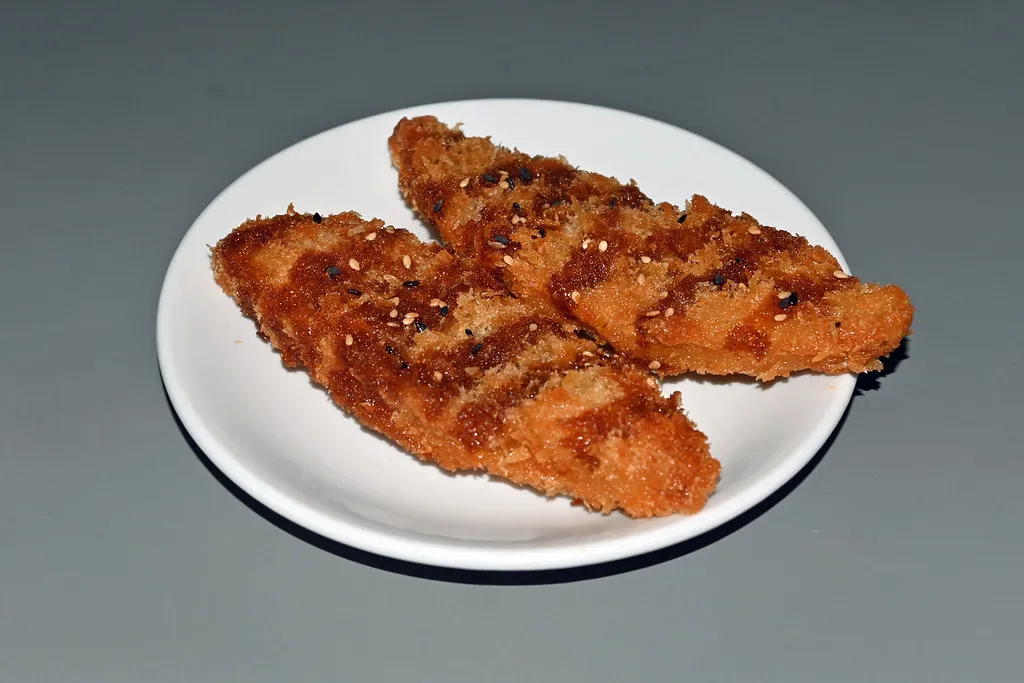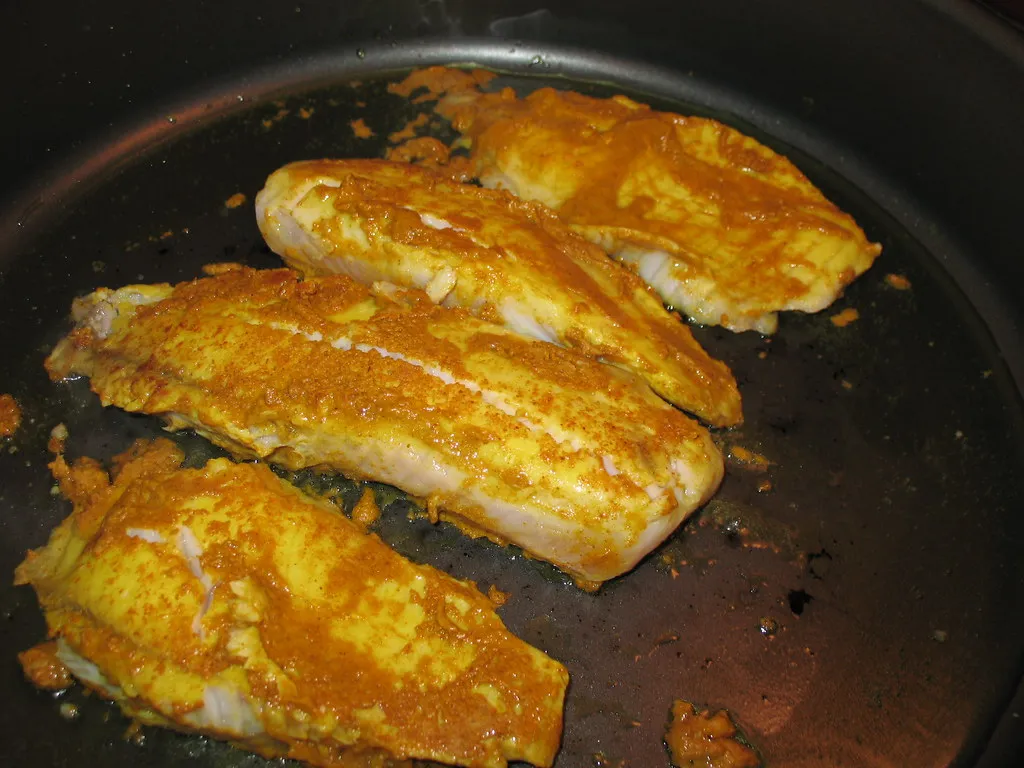The Best Fluffy Pancakes recipe you will fall in love with. Full of tips and tricks to help you make the best pancakes.
Baking fish fillets is one of the easiest and healthiest ways to enjoy a flavorful, protein-rich meal—especially on a busy weeknight. Whether you’re working with cod, tilapia, or salmon, the oven brings out the natural tenderness of the fish while keeping prep and cleanup simple. But if you’ve ever ended up with dry, rubbery fish, you know it’s not just about tossing it in and hoping for the best.
In this guide, you’ll learn exactly how to bake fish fillets to flaky, juicy perfection every time. From choosing the right type of fish to seasoning ideas and foolproof baking tips, we’ve got everything you need to make a delicious, oven-baked fish dish the whole family will love.
🐟 Why Baking Fish Fillets Is the Perfect Weeknight Dinner
When time is short and you still want to serve something nutritious and satisfying, baked fish fillets are a go-to solution. They strike the perfect balance between convenience, health, and flavor—making them ideal for busy weeknights when you don’t want to sacrifice quality for speed.

✅ Quick and Healthy Meal Option
Fish fillets cook fast—usually in under 20 minutes—so you can have dinner on the table in no time. Unlike deep-fried or heavily sauced dishes, baking fish uses minimal oil and keeps the fat content low while still offering a rich source of lean protein, omega-3 fatty acids, and essential nutrients. It’s a heart-healthy choice that doesn’t feel like a compromise.
🧄 Minimal Ingredients, Maximum Flavor
You don’t need a long list of fancy ingredients to bake a great fish fillet. Simple pantry staples like olive oil, garlic, lemon juice, salt, and pepper are often all it takes to create a flavorful, elegant dish. Add a few fresh herbs or a sprinkle of seasoning, and you’ve got a restaurant-worthy meal with very little effort.
🛠️ Easy to Customize
Whether you love bold spices or prefer something light and fresh, baked fish can be easily adapted to suit your taste. You can switch up the type of fish, experiment with different marinades or spice rubs, or add veggies and grains on the side for a complete meal. It’s a flexible base for endless recipe variations.
🥡 Great for Meal Prep
Baked fish holds up well in the fridge, making it a smart choice for those who like to prep meals ahead of time. Just pair your fillets with rice, quinoa, roasted veggies, or a salad, and you’ve got a ready-to-go lunch or dinner that tastes just as good the next day.
🐟 Choosing the Best Fish for Baking
Not all fish are created equal—especially when it comes to baking. Some types of fish fillets hold up beautifully in the oven, turning tender and flaky without drying out, while others may require different cooking methods to shine. Choosing the right fish can make all the difference in how your dish turns out.
🥇 Top Fish Fillet Options for Baking
The best fish for baking are those with a firm texture and mild flavor. Popular choices include:
- Cod – Mild, flaky, and perfect for absorbing seasonings
- Tilapia – A lean, budget-friendly option with a clean taste
- Haddock – Slightly sweet and firm, great for breaded or seasoned bakes
- Salmon – Rich in flavor and healthy fats, ideal for heartier dishes
These fish fillets respond well to high heat and simple seasonings, making them reliable choices for any baked fish recipe.
❄️ Fresh vs. Frozen Fish Fillets: What to Know
You don’t have to buy fresh fish to enjoy a delicious baked fillet—frozen fish fillets work just as well if thawed properly. When using frozen fish, make sure to:
- Thaw it completely in the fridge overnight or under cold water
- Pat it dry before seasoning to avoid excess moisture
- Choose vacuum-sealed or flash-frozen fillets for best texture and flavor
Fresh fish can be wonderful too, especially if you’re buying local or in-season varieties. Just make sure it smells clean and has a firm, translucent appearance.
🎯 Mild vs. Bold Flavors: Match Fish to Your Taste
Mild fish like cod and tilapia are perfect blank canvases for bold seasonings, marinades, and sauces. If you enjoy citrusy, herby, or spiced flavors, these fish types will complement your tastes perfectly.
For a richer experience, fattier fish like salmon or trout pair well with buttery sauces, savory glazes, or strong herbs like dill and rosemary.
💡 Why White Fish Works So Well in the Oven
White fish varieties—like cod, haddock, and flounder—are ideal for baking because they cook quickly and flake easily without falling apart. Their neutral flavor lets seasonings shine, and their texture becomes tender and moist when cooked properly. Whether you’re keeping things simple or going gourmet, white fish is a safe and versatile starting point.
🧂 Key Ingredients and Seasonings You’ll Need
One of the best things about baking fish fillets is that you don’t need a long list of fancy ingredients. In fact, some of the most delicious baked fish recipes are built on just a handful of simple, flavorful items that you likely already have in your kitchen. The key is using ingredients that enhance the natural flavor of the fish without overpowering it.
🛒 Basic Pantry Staples
These foundational ingredients form the base of most baked fish recipes:
- Olive Oil – Helps lock in moisture and adds a rich, slightly fruity flavor
- Lemon Juice – Brightens up the dish and balances any “fishy” notes
- Garlic (fresh or powdered) – Brings bold, savory depth
- Salt and Pepper – Essential for highlighting the natural taste of the fish
These ingredients not only add flavor but also help the fish cook evenly and stay tender.
🌿 Flavor Boosters
If you want to elevate your baked fish from simple to sensational, try adding some of these flavor-enhancing extras:
- Fresh Herbs – Parsley, dill, thyme, or basil can add freshness and aroma
- Paprika – Adds color, a touch of smokiness, and a warm flavor
- Butter – Melts into the fish for a luxurious, rich taste
- Capers or Olives – Offer a briny contrast that pairs beautifully with mild fish
You can also try adding a splash of white wine or soy sauce for extra complexity.
🍋 Optional Add-Ons for Texture and Taste
To build a more complete dish or add some texture, consider:
- Sliced lemons or limes – Layer under or on top of fillets to infuse citrus flavor
- Cherry tomatoes – Add a burst of sweetness and color
- Breadcrumbs or crushed nuts – Sprinkle on top for a crunchy crust
- Parmesan cheese – A light dusting adds umami and golden color
These extras take just a minute to add but make your fish look and taste gourmet.
💡 Healthy Alternatives
If you’re looking to keep your meal on the lighter side, you can still get big flavor with clean ingredients:
- Greek yogurt or Dijon mustard – Makes a great light marinade or topping
- Coconut aminos – A lower-sodium alternative to soy sauce
- Avocado oil – A high-heat alternative to olive oil with a mild taste
- Fresh citrus zest – Adds bold flavor without any calories
These healthier swaps can help you enjoy your baked fish guilt-free, without sacrificing taste.
🔥 Step-by-Step Guide: How to Bake the Perfect Fish Fillet
Baking fish might seem intimidating at first, but once you understand the process, it’s incredibly simple—and the results are tender, flaky, and full of flavor. Whether you’re working with fresh cod, tilapia, or salmon, this foolproof guide will help you bake the perfect fish fillet every time.

1. Preheat Your Oven
Start by preheating your oven to 375°F (190°C). This temperature is ideal for baking most types of fish—it’s hot enough to cook the fillets evenly without drying them out. For thicker cuts like salmon, you can go slightly higher (around 400°F), while thinner white fish might do better at 350°F.
Tip: Line your baking dish or sheet pan with parchment paper or foil for easy cleanup. If you’re looking for a reliable and efficient oven, consider the Ninja DCT451 Thermometer and FlavorSeal Convection Oven, which is known for its even cooking and convection features to ensure perfect results every time.
2. Prepare and Season the Fillets
Pat your fish fillets dry using paper towels. Removing excess moisture helps the seasonings stick and promotes better texture while baking.
Next, season both sides of the fish with:
- Salt and pepper
- A drizzle of olive oil or melted butter
- Fresh or dried herbs (like dill, parsley, thyme)
- A squeeze of lemon juice
You can also add garlic, paprika, or your favorite seafood seasoning blend. For more flavor, marinate the fillets for 15–30 minutes beforehand in a mix of lemon juice, oil, and herbs.
3. Add Optional Extras
To make your dish more complete and visually appealing, you can add:
- Lemon slices on top of the fillets
- Cherry tomatoes, onions, or bell peppers around the fish
- A handful of capers or a sprinkle of breadcrumbs or Parmesan cheese for a flavorful crust
These simple add-ons bring color, texture, and extra flavor without much effort.
4. Bake the Fish
Place the fish in the oven and bake for:
- 10–12 minutes for thin white fish fillets (like tilapia or cod)
- 12–15 minutes for thicker fish (like salmon or halibut)
A good rule of thumb: Bake for 10 minutes per inch of thickness, measured at the thickest part of the fillet.
Pro Tip: The fish is done when it flakes easily with a fork and looks opaque all the way through.
5. Rest and Serve
Once baked, remove the fillets from the oven and let them rest for a couple of minutes. This allows the juices to redistribute and ensures every bite is moist and flavorful.
Serve your baked fish fillets with sides like:
- Steamed or roasted vegetables
- Rice, quinoa, or couscous
- A light salad with vinaigrette
You can also top them with a dollop of garlic butter, a spoonful of salsa, or a creamy herb sauce for an extra burst of flavor.
💡 Pro Tips and Common Mistakes to Avoid
Baking fish fillets is a simple process, but there are a few key tips that can take your dish from average to absolutely delicious—and a few common pitfalls to watch out for. Whether you’re new to cooking seafood or a seasoned home chef, these insights will help you master the perfect baked fish fillet every time.
✅ Pro Tips for Success
1. Use a Meat Thermometer
Fish is perfectly cooked when it reaches an internal temperature of 145°F (63°C). Using a meat thermometer takes the guesswork out of the process and helps you avoid undercooking or overcooking.
2. Choose Evenly-Sized Fillets
Uniform fillets cook more evenly. If your fish pieces are different sizes, consider cutting larger fillets in half or removing thinner pieces earlier during baking.
3. Don’t Overcrowd the Pan
Give your fish some space. Crowding traps steam and can result in soggy textures. Use a baking sheet or dish large enough to allow air to circulate around each fillet.
4. Add Fat for Moisture and Flavor
A little olive oil or melted butter goes a long way. Brushing the top of your fillets helps them stay moist and adds richness. You can also dot the fillets with a pat of herbed butter before baking.
5. Finish With Freshness
After baking, brighten the dish with a sprinkle of chopped herbs, a dash of lemon zest, or a drizzle of extra virgin olive oil. These finishing touches make the flavors pop.
❌ Common Mistakes to Avoid
1. Overcooking the Fish
The number one mistake! Overcooked fish becomes dry and rubbery. Keep an eye on the timer, and remove the fish as soon as it flakes easily or hits 145°F.
2. Not Drying the Fillets
If you bake fish while it’s still wet from thawing or rinsing, it won’t brown or hold seasoning as well. Always pat it dry with paper towels first.
3. Using Too Much Liquid
While a splash of white wine or lemon juice is great for flavor, too much liquid can steam the fish instead of baking it. This leads to a mushy texture. Use moisture wisely.
4. Skipping the Rest Time
Letting your baked fish rest for a few minutes before serving allows the juices to redistribute, making each bite more flavorful and moist.
5. Underseasoning
Fish has a delicate flavor, but it still needs seasoning to shine. Don’t be afraid to use salt, pepper, garlic, citrus, and herbs generously—but tastefully.






Nice weblog here! Also your web site loads up fast!
What host are you using? Can I get your affiliate link in your host?
I wish my web site loaded up as quickly as yours lol
https://tenchat.ru/4991916
https://teletype.in/@kema1
https://t.me/uspex1001
генератор sitemap.xml
[url=http://google.com.sv/url?q=http://razrabotkaiseo.ru]http://google.iq/url?q=http://razrabotkaiseo.ru[/url]
I am glad to be one of many visitors on this great website (:, regards for putting up.
https://bestcanada-casinos.com/
установка 1С КА 2.0 недорого Нс Диджитал Франчайзинг 1С Бухгалтерия, продажа и разработка продуктов 1с
Я нравлюсь этот веб-сайт – он такой полезный и полезный.
Посетите также мою страничку билеты и отели https://tiktur.ru/
Отлично выглядящий веб-сайт.
Предположим, что вы сделали много из вашего собственного
html кодирование. Посетите также мою страничку гостевые дома на
сутки https://tiktur.ru/
Ticker displays appear today on the exterior of
the News Corp Building, which houses the headquarters for Fox News Channel/News Corp in the west extension of Manhattan’s Rockefeller Center,
as well as one that displays delayed stock market data that is located in Times Square.
Apart from some social commentary like Melle Mel’s one verse
on “Superrappin'”, Kurtis Blow’s ruefully comedic “The Breaks” (Mercury, 1980) and a spurt of records
following the success of Grandmaster Flash and the Furious Five’s “The Message” (Sugar Hill, 1982), the old school specialized lyrically
in party rhymes. In 2012 The Armidale School started sending fours, and the first IV race of 2013 was historic
as the first time crews from all nine GPS schools competed.
The race is on. KOMO-TV signed on in December 1953 as the
flagship station of Seattle-based Fisher Broadcasting;
originally an NBC affiliate, it was the television extension to KOMO (1000 AM), which was a sister station until 2021.
The station became Seattle’s ABC affiliate in 1959 when KING-TV affiliated with NBC after a year-long transition period;
it has generally ranked second in the city’s television market ratings
behind KING-TV throughout its existence. Gelder, Lawrence van (December 11,
1994). “Lights Out for Times Square News Sign?”.
Not all the country’s inhabitants met the news with
a willing spirit, though. The Shopping Trends team is independent of the
journalists at CTV News. Destructoid’s Chris Carter felt that the development team “went all the way” and spent a lot of time on the game’s concept.
We’ve come up with 10 great ideas to get the family off the couch and spending
time with each other. Wright’s prairie style days would
come to an abrupt end in 1909 with his departure to Europe with Mamah, although some
aspects of it would show up in his later work.
While rapid ice loss and melt of these Antarctic glaciers have been well documented, the new study suggests there could be
future disintegration of the ice shelves to come.
Satellite images show that two important glaciers in the Antarctic are sustaining rapid damage
at their most vulnerable points, leading to the breaking up of vital ice shelves with major consequences for global sea
level rise. The researchers, led by Stef Lhermitte, satellite expert at Delft University of Technology in the Netherlands, used
satellite data to document the growth of the damaged areas from
1997 to 2019. The images showed highly crevassed areas and
open fractures in the glaciers.
Всем привет. Пишу сюда, потому что уже реально не знаю, куда выплеснуть это чувство тупика.
Я закончила учёбу, есть базовые знания, желание работать и развиваться, но каждый раз упираюсь в одно и то же: «нужен опыт от 1–3 лет». И вот замкнутый круг — чтобы получить опыт, нужна работа, а чтобы получить работу, нужен опыт. Стажировки либо неоплачиваемые, либо требуют полного рабочего дня, на который не всегда можно себе позволить жить. Отправляешь резюме — тишина. Иногда доходишь до собеседования, всё вроде бы хорошо, но в итоге выбирают того, кто «уже работал». Подскажите, может, у кого-то была похожая история — что помогло вам выйти из этого замкнутого круга? Миф или Рельность – [url=http://www.miragescort.ru]работа без опыта в москве для женщин вакансии[/url]
Всем привет. Каждый год перед Новым годом ловлю себя на мысли, что живая пихта — это не просто дерево, а часть самого праздника. Запах хвои сразу меняет настроение: дом наполняется теплом, огоньками, ожиданием чуда и тем самым спокойствием, которое бывает только в декабре. Украшать её — отдельный ритуал, когда время будто замедляется, а мысли становятся проще и добрее. Искусственные ёлки удобны, но у живой пихты есть душа, и именно она создаёт ощущение настоящего Рождества.
А для вас что важнее в новогодней ёлке — практичность или та самая атмосфера, которую даёт живая пихта? Подскажите где [url=https://elki.site/product-category/zhivye-pixty/]пихта на новый год купить спб[/url]